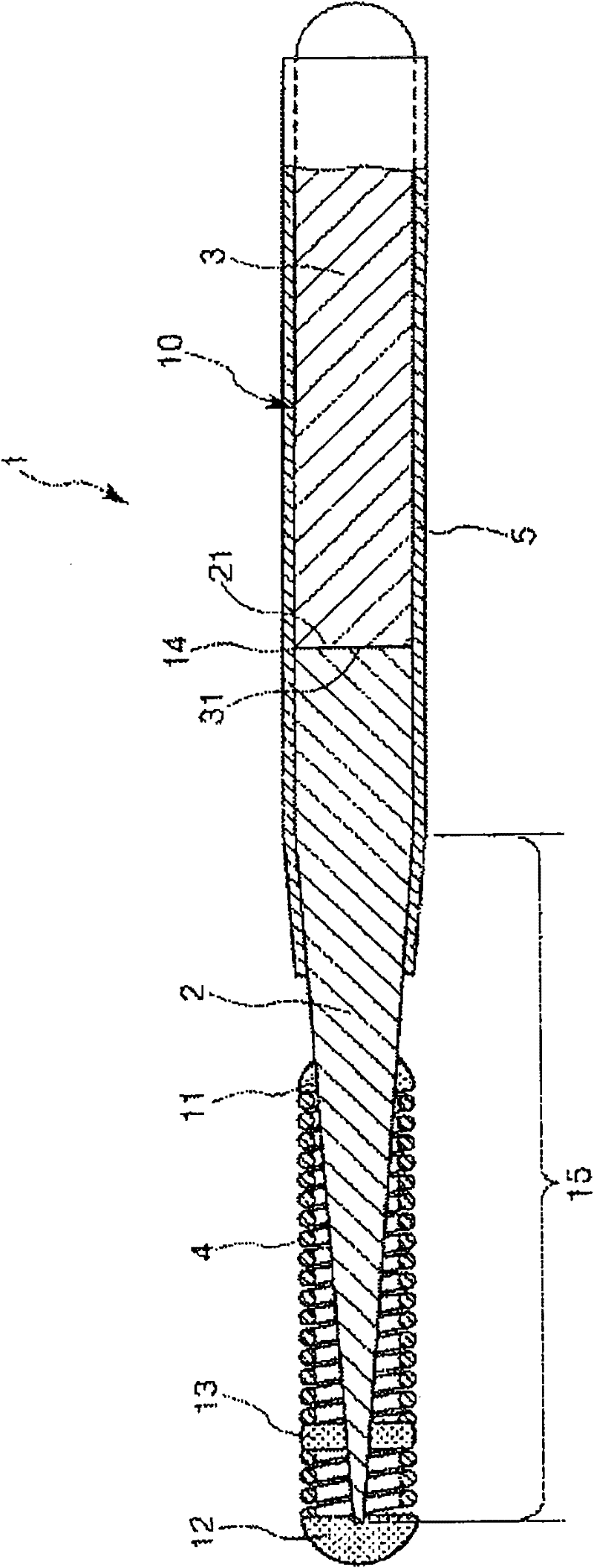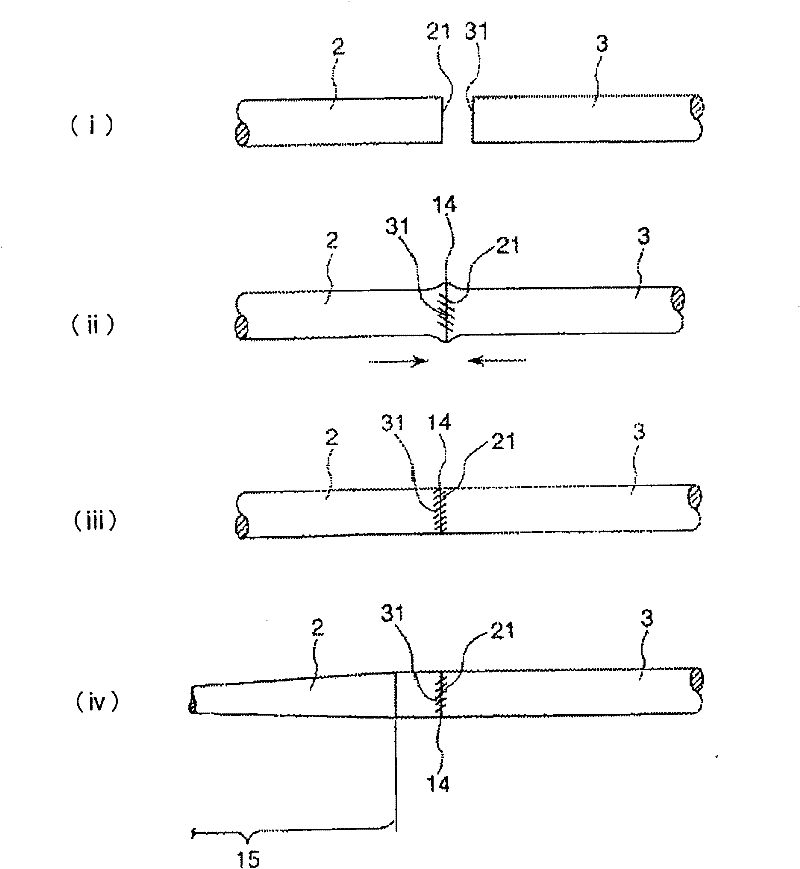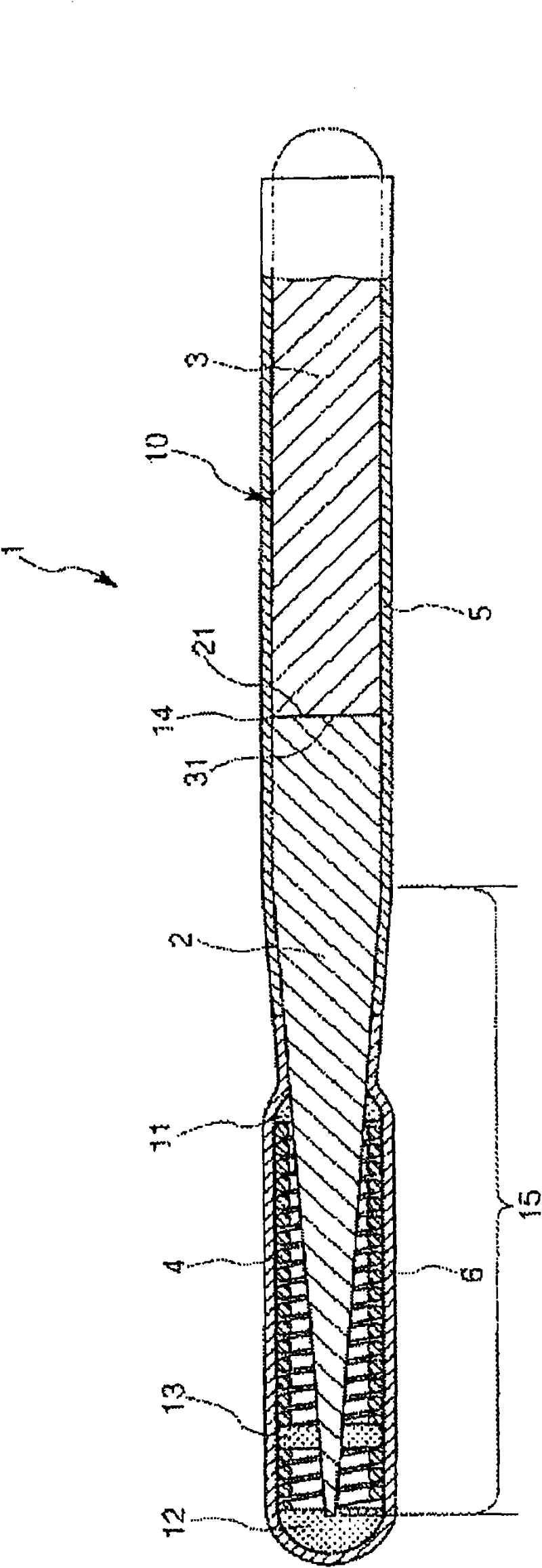Guide wire and stent
A guide wire and weight technology, which is applied in the field of medical appliances, can solve the problems of not meeting the various characteristics of the core material of the guide wire, poor corrosion resistance and cold workability, less than 1%, etc. The effect of excellent, excellent sliding properties
- Summary
- Abstract
- Description
- Claims
- Application Information
AI Technical Summary
Problems solved by technology
Method used
Image
Examples
Embodiment 1~5 and comparative example 1
[0284] The ferrous alloys of Examples 1 to 5 and Comparative Example 1 were the same except for the alloy composition and the aging treatment time, and were produced by the following method.
[0285] Alloys having the compositions shown in Table 1 were melted and solidified at an average cooling rate of 140° C. / min to produce a compact with a diameter of 12 mm. This billet was hot-rolled at a temperature of 1300° C. to obtain a plate material with a thickness of 1.3 mm. This hot-rolled material was subjected to first annealing at 1300° C. for 10 minutes, and then cold-rolled several times to have a thickness of 0.65 mm. Thereafter, the second annealing was performed under the same conditions, and cold rolling was performed several times to obtain a sheet material with a thickness of 0.2 mm. The total working ratio after the second annealing (final annealing) was 70%. After heat-processing each board|plate material at the temperature of 1300 degreeC for 30 minutes, it put int...
Embodiment 6
[0287] The ferrous alloys of Examples 6 to 9 have the same composition but differ in the process conditions from annealing to aging treatment. For example, the ferrous alloy of Example 6 was produced by the following method.
[0288]Alloys having the compositions shown in Table 1 were welded and solidified at an average cooling rate of 140° C. / minute to produce a compact with a diameter of 20 mm. This billet was hot-rolled at a temperature of 1300° C. to obtain a plate material with a thickness of 1.6 mm. This hot-rolled material was subjected to first annealing at a temperature of 1300° C. for 10 minutes, followed by air cooling, and then cold-rolled a plurality of times to have a thickness of 0.8 mm. Thereafter, second annealing→cold rolling→third annealing→cold rolling were performed under the same conditions to obtain a sheet material with a thickness of 0.2 mm. The total processing ratio after the third annealing (final annealing) was 50%. After heat-processing the obt...
Embodiment 7
[0289] The iron-based alloys of Examples 7-9 are annealed and cold-rolled to the iron-based alloys of Example 6. Figure 11 (c)~ Figure 11 Modified as shown in (e) [ Figure 11 (c) is embodiment 7, Figure 11 (d) is embodiment 8, Figure 11 (e) is Example 9]. Table 1 shows the total cold working rate after final annealing.
[0290] [Table 1]
[0291]
PUM
| Property | Measurement | Unit |
|---|---|---|
| density | aaaaa | aaaaa |
| density | aaaaa | aaaaa |
| length | aaaaa | aaaaa |
Abstract
Description
Claims
Application Information
 Login to View More
Login to View More - R&D
- Intellectual Property
- Life Sciences
- Materials
- Tech Scout
- Unparalleled Data Quality
- Higher Quality Content
- 60% Fewer Hallucinations
Browse by: Latest US Patents, China's latest patents, Technical Efficacy Thesaurus, Application Domain, Technology Topic, Popular Technical Reports.
© 2025 PatSnap. All rights reserved.Legal|Privacy policy|Modern Slavery Act Transparency Statement|Sitemap|About US| Contact US: help@patsnap.com



